Auction Drafts are quickly becoming the most popular form
of draft-day fun for fantasy players everywhere. Players
enjoy the fast paced flow of an auction, but most
importantly they appreciate the opportunity to own any
player.
How Does an Auction Draft Work?
A standard Auction Draft will have a draft order that
determines which owner is allowed to bring a player up for
bidding. The owner that is on the clock will be making an
opening bid on a player. Once the bid and player are
stated, the bidding process begins and the player is up
for auction. At this point, an appointed member of the
league will act as Auctioneer. This member has control
over the bidding procedures. Normally, auctioneers will go
slow enough to ensure everyone's bid is heard and the
player is sold for his true market value. Once the player
is sold to a team, that team will subtract the price paid
from their draft day budget and the next player will be
brought up for auction. This goes on through the
completion of the draft. In most leagues, there is a rule
where 1 dollar must be left in reserve for every roster
spot that is required to be filled. For example, if we
have league configurations drafting 10 players and a
budget of 200 draft dollars, no single player can go for
more than 191 draft dollars (leaving 1 dollar for the
remaining 9 roster slots).
Pre-Draft Strategies:
Knowing Player Values
Luckily if you're reading this article, much of the work in identifying player values has already been done for you. Thanks to the work of Angelo Perri, Fantistics offers the most accurate forecasting software in the business. Not only are the projections accurate, but customizable to your own league type and scoring system. Angelo's done the leg work in forecasting player's worth which will get you more than halfway there, but the elite owners will carry out the rest of the work. Having player values and having the confidence to know they're accurate is a large step in winning your draft day, but projections are a guideline to use for your draft. At Fantistics our best work is at quantifying a player's projections into a dollar value as a baseline for you to use. These are fair value estimates for the players but if they're meant to still be used as guidelines. Each draft has it's own life, some will see top players go for far higher than our valuations and some will see more emphasis placed on sleepers or rookies. This is the result of individual league situations we can't account for. For example leagues that have specific rules that value rookie players or younger players (keeper leagues for example) may place a higher emphasis on these types of players. These inherent league parameters which we can't standardize could play a part but more likely what will make each league unique are the opponents in which you're competing against. This brings us to our next step in preparing for Auction style drafts: Knowing your opponents.
Knowing Your Opponents
A lot of the variation in drafts comes from the owners within your
league. You may have a die hard Yankees fan that "has to
have" Alex Rodriguez, if you know this information you can
anticipate his draft day value going higher than maybe
what you initially project. This is why it is so important
to make your own assessment of a players given value in
relation to his statistics AND how they fit into your
league, but more importantly on how his value is perceived
amongst your competitors. That same Yankees fan may be
subconsciously opposed to bidding on David Ortiz, so maybe
his perceived value is lower to that individual. I cannot
stress this enough, this portion of your draft preparation
is AS important as coming up with initial values for
players based on their performance. If you know your
competition you can anticipate value inflation or value
deflation for specific players and adjust your budget
accordingly.
Making a Budget
The first step in making a budget is deciding how much
you're willing to spend for certain positions as well as
certain statistical categories. Again, these are to be
used as GUIDELINES for your draft. Every draft has its own
life to it, and you may overspend certain positions and
have to reallocate, or you may land a player for a lot
less than you anticipated and have more money to spend in
other areas, and all of this will most likely happen. But
if you have a budget planned you'll have an idea of where
to allocate your draft funds. The budget you come up with
is not concrete, but it should be again based on the type
of team you intend on drafting. The best way to do this is
plot out a draft of your ideal team based on the values
you've assigned players and your league's draft budget.
This should give you a good idea of what you can afford to
spend in certain areas, and if you were to spend on those
players what strengths and weaknesses your ideal team
would have. The second part of that sentence is important.
Many people subconsciously overvalue specific categories
and when they're done drafting, their team illustrates
this. I, for example, have a tendency to be very conscious
of drafting enough speed with regards to baseball. I tend
to subconsciously OVERVALUE speed, but by looking at my
mock ideal team I notice this and am able to plan
accordingly in drafts. Preparing a mock ideal team for
yourself can tell you a lot about your draft. It
identifies strengths and weaknesses that you may naturally
have and it gives you a base for spending to work off of.
Again, I stress using this information as a guideline
because as I stated before Drafts are unpredictable. You
could plan your budget to spend 2/3 on hitting and 1/3 on
pitching and find out that everyone else has a similar
strategy and pitching is being undervalued. This type of
preparation and these guidelines are there for you to be
able to Plan and Adjust.
In-Draft Strategies:
Now that you've planned thoroughly for your draft lets
talk about some in draft strategies. This is what we live
for in fantasy, draft days. Everyone loves draft day, and
it's always the most anticipated day of the fantasy year.
You get to put all your hard work and research to use and
you get to reunite with all your competitors for a day of
smack-talking, good food, good drinks, and great company.
GENERAL PRINCIPLE
Much like every other form of drafting, in Auction drafts
the key is finding value. If you can get a projected 12
dollar player for 8 dollars, that's an excellent value (75%
of their projected worth). Usually the owners who get the
most value out of their draft, are in the best position to
contend afterwards.
Basic Strategies
Patience is a Virtue:
A generally accepted strategy in Auction Drafts is to be
patient because many deals can be had at the end of the
draft that may not be available early on. It's been noted
that many drafts follow a wave-like pattern. At the
beginning a lot of rampant spending goes on because people
naturally want to be involved and want to acquire as many
superstars as they can since everyone is available. In the
middle things slow down because people start to worry
about their budgets. Then after the 2nd quarter slow down
things pick up with more spending as people who haven't
spent a significant portion of their budget start to spend
and finally the 4th quarter everyone's going for cheap.
While this can be true in most drafts, the first quarter
spending is only extraordinary in drafts where owners are
new to the auction draft experience.
Managing Other Teams Budgets
You might say to yourself, "How can I manage my opponents
Budget?". Well, the short answer is taking advantage of
position scarcity. If you have already spent an allotted
amount of your budget for certain players you want to make
sure the other top players at those positions go quickly
thereafter. This can cause an inflated value when other
owners believe the top players at a position may be
dwindling. This realization amongst other owners can be
something to take advantage of.
Dealing with more Experienced Draft Participants
To more experienced owners, this knowledge is common
place, and since most adjust accordingly, values can be
found at any point in the draft. Still a lot of spending
takes place early because bigger names are brought out
first. Many times more patient owners do this to encourage
early spending in hopes of finding later bargains, but
often times its to no avail. As I've mentioned before
Drafts have lives of their own, and sometimes you'll have
a top tier player be the 50th player taken and for a price
higher than the first couple top tier players. It's an
efficient marketplace, value is value... get it while you
can. Because often times the expected bargain hunters will
clash later on in the draft against one another the
expected bargains will become expensive purchases. The key
is sticking to your GUIDELINES (your budget and your
assigned projected values) and finding VALUE wherever you
can, whatever the time.
In Depth Strategies, Knowing Your Opponents
Now lets look at some more in depth strategies that are
all based on recognizing the information your opponents
are giving you. Again, I'll use poker as an analogy.
An Auction Draft is very similar to a poker game. Because
as important as the cards you hold in your hand are (your
research and knowledge) its just as important to be able
to anticipate what your opponents are holding, and much
like a poker game its important to read people to
understand the information they're giving you. As I
mentioned before a participant's hometown team may give off
some indication of favorite players etc, but this is
likely information that everyone in the room is going to
know, and something your opponent may even be conscious
of. In my league, my competitors are aware of who's a fan
of what team and what players and often times the fan
doesn't even enter the bidding for the player. WHY? How
could he resist participating in bidding for his favorite
player? Well, most likely because he feels he's going to
be baited into a bidding war with another opponent. He's
had this experience before and fears it happening again.
Physical Reactions
Most of your opponents will give you tells that indicate
when they're truly interested in a player or not. Watch
the room as a players name is brought up with an initial
bid, some reactions will jump out at you. Some people
might immediately lean back in their chairs (this would be
an indication that they're willing to pass on this
player), some may scoot up and seem more interested,
others may become tense and quiet. NOTE when people tend
to get quiet or tense up they usually have a significant
interest in this player. All of this information is
helpful. By understanding these people's reactions you may
understand who your competition is for certain players.
Watch players facial reactions when you believe you're
heads up with someone in a bidding war, maybe you can tell
how far they're willing to go to acquire the player. This
is a little bit trickier because in these scenarios people
often make attempts at deceiving you, but pay attention
keep track of how they act in those situations and even
take notes. Watch how they maneuver heads up with other
owners. You may find yourself in a similar situation later
on in this draft or a future draft and that information is
vital. Remember EVERY DOLLAR COUNTS.
Bidding Patterns
This information is some of the easiest to understand and
most important to pay attention to.
1) Pay attention to an owners participation in players
bidding in which they brought to the initial bid.
A lot of owners tend to fall into one category or the
other on this one. They either love to bid on the names
they're bringing up, OR they want nothing to do with the
player and they want others to spend on him.
2) Pay attention to when owners participate in bidding.
Some owners tend to jump into bidding at the very end when
they're interested often waiting till almost the last
moment before getting involved. Some owners like to bid
early and often when players they like are brought up. If
you can figure out these tendencies you know when people
are truly interested.
3) Pay attention to cutoff points
Often times owners set cutoff points in which they refuse
to spend above, which is fine for budgeting, but they
often act accordingly. Some owners cutoff points only end
in 0's and 5's (nice round numbers) and often you might
know that 1 extra dollar is the difference between you and
that player, or you know you can drive them up to their
next cutoff point. To gain an understanding of this
information watch how people react when they lose out on
bids. If they kept bidding higher repeatedly and then
immediately fell out of the bidding process at a specific cutoff you know they
strictly adhere to cutoff points.
Taking It All in:
What we've just gone over is a lot of information to
digest, and I understand a lot of it may even be difficult
to understand how to use. But these are all things to take
into consideration when you're preparing for an auction
draft and partaking in an auction draft. Fantasy sports is
game that many of us play for the enjoyment, and if any of
this isn't enjoyable for you don't take it into your draft
day strategy. But to those of us that love the competition
and the analysis, these tips are the best things to us to
put yourself in contention with your draft.






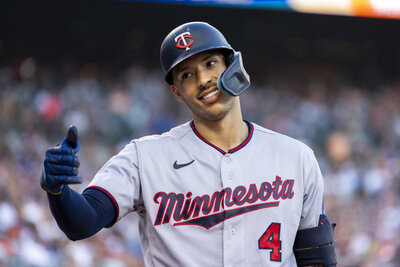


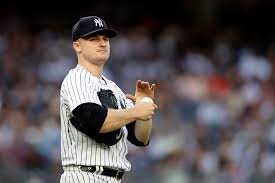



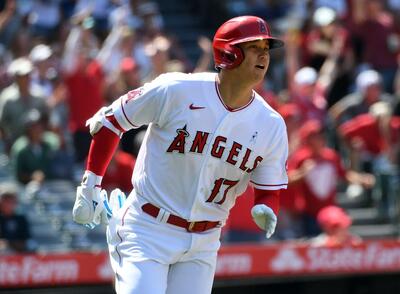
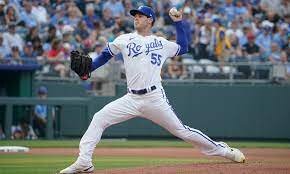


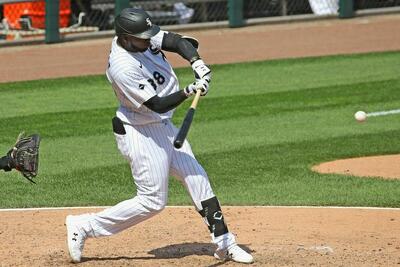

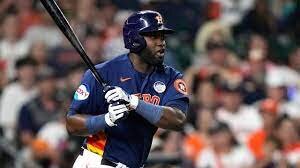
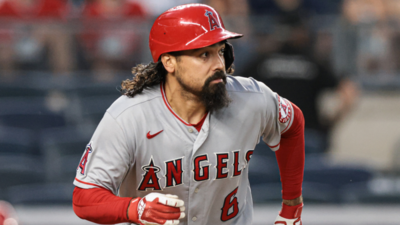

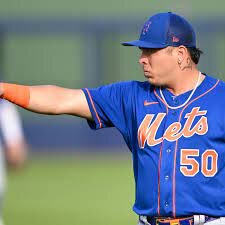









Jeff Brass
Feb 23, 07 at 02:14 PM
I have been playing fantasy leagues since the late '70's. I will only do auction leagues now. An they have to be keeper leagues. I would like to see an article addressing those who are in keeper leagues & how much one spends is as important, as who we keep. An howpicking upplayers even thosewho are in the minors on 5 year contracts make better picks then fading players on 1 year contracts.
govauctionalert com
Feb 23, 07 at 02:14 PM
Awesome Post. I add this Blog to my bookmarks.
welcome
Feb 23, 07 at 02:14 PM
Sweet site! I found it although surfing around on Yahoo News. Do you have any tips on how to get listed in Yahoo News? I have been trying for some time but I never ever seem to be to get there! Many thanks